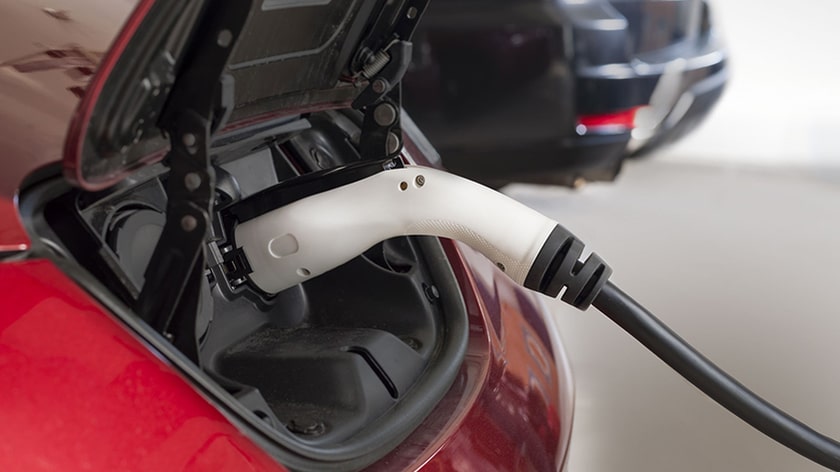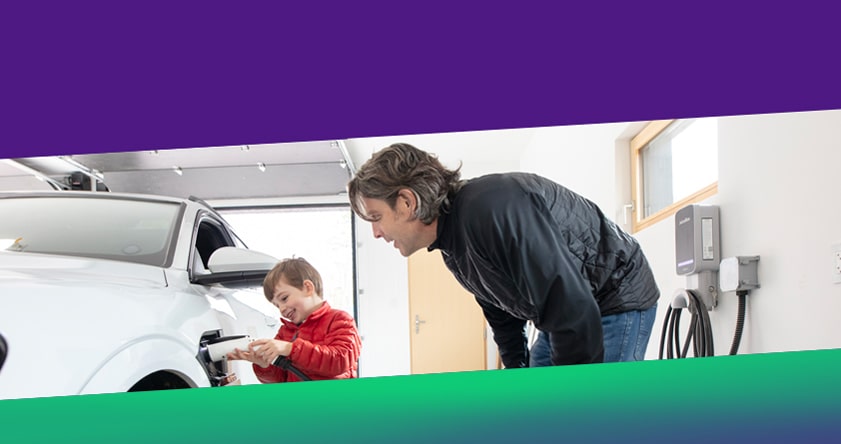How Long Does It Take to Charge a Nissan LEAF?

Electric vehicle (EV) battery charging time is a deciding factor on whether to buy a Nissan LEAF or any other EV. You may be wondering: is a Nissan LEAF a hybrid, and does it need gas? The answer is: no, it is fully electric. Therefore, it is important to learn the charge times associated with your EV. Other Enel X JuiceBlogs address how long it takes to charge a Tesla, how long it takes to charge a Chevy Bolt, and how long it takes to charge an Audi e-tron. But now we turn to the Nissan LEAF. How long does it take to charge using Level 1 (120 volt), Level 2 (240 volt), and DC fast Nissan charging stations (480 volt)? And how long does a Nissan LEAF battery last once you’re juiced up?
Nissan LEAF Battery Size and Charger Types
Charging time for any EV depends on the battery size, how depleted the battery is, and the charging equipment, including the level and rate. For the Nissan LEAF, charging time can range from as little as 40 minutes to more than two days, depending on the charging rate.
Battery size
The Nissan LEAF comes in two versions, depending on how far you want to go, according to Nissan. The Nissan LEAF with a 40 kilowatt-hour lithium-ion battery and 110-kilowatt electric motor delivers 147 horsepower and up to 149 miles of range. The extended-range LEAF PLUS features a larger capacity 62-kilowatt-hour lithium-ion battery with a 160-kilowatt-hour motor that produces 214 horsepower, and the range jumps to 226 miles.
Plug type
The LEAF comes with the industry-standard J1772 connector, which lets you use the same charge port for Level 1 and Level 2 charging. To step up to DC fast charging, the LEAF uses the popular CHAdeMO fast charging port. They’re located together in the front center of the vehicle.
Nissan LEAF Charging Rate
The Nissan LEAF charging rate varies from a sluggish 5 miles per kilowatt-hour for Level 1 charging to 200+ miles for DC fast charging. Which you should choose depends on your needs.

Level 1 Charging
Level 1 charging requires only that you plug into a standard 120-volt outlet, so it’s hard to beat for ease and cost. But with charging adding only 5 miles per hour, it’s not efficient if you want to max out a depleted battery.
Level 2 Charging
You can plug the portable charging cable that comes with a Nissan LEAF into a 240-volt outlet for Level 2 charging. But better still, you may decide on a more permanent solution, after you weigh the pros and cons of plug-in versus hardwired charging station. A permanent home charging station like the Enel X JuiceBox ensures a convenient connector with cable rack is always ready for use. Plus, you get WiFi connectivity that lets you schedule charging when rates are the lowest. No matter how depleted your battery is, you can charge overnight and enjoy your LEAF’s full range.
DC Fast Charging
If you’re like most EV drivers, you’ll charge at home almost 90 percent of the time, according to JD Power. So most of the time, you’ll use a public charging station only to top off. To charge your Nissan LEAF this way, you’ll need to use the CHAdeMO fast charging port. In general, however, you’ll find it simpler and more convenient to charge at home to ensure you have sufficient charge to get where you need to go.
How to charge your Nissan LEAF
Charging the Nissan LEAF is straightforward. Park your vehicle, turn it off, and set the parking brake. Then, open the charge port lid and cap, located in the center of what’s normally the car’s grille. Plug the charge connector into the charge port. The Nissan LEAF beeps to let you know you’ve done it right.
The Nissan LEAF stops charging on its own when the battery reaches full, but you can end charging at any point by unplugging the charge connector. Note that the available charge and capacity are shown on the LEAF’s display, but they may not exactly match the numbers on a DC fast charger. Still, they should be close.
Where to quick charge your Nissan LEAF
For the rare occasions when you want to charge your Nissan LEAF away from home, there are apps and services like the community-based PlugShare that can help you find public charging stations, and many offer apps or route planner tools to help you get there. But most frequently, you’ll find it easier to charge at home.
When to charge your Nissan LEAF
If you’re charging at home, exactly when the EV uses power to charge is flexible. A connected Enel X JuiceBox smart charger can communicate with the utility and automatically shift the car’s charging to a time when you can save money with lower rates. That’s also typically when the utility can supply clean energy, like wind and solar, with the least impact on grid resources. What matters for consumers and utilities alike is to use energy resources wisely.



